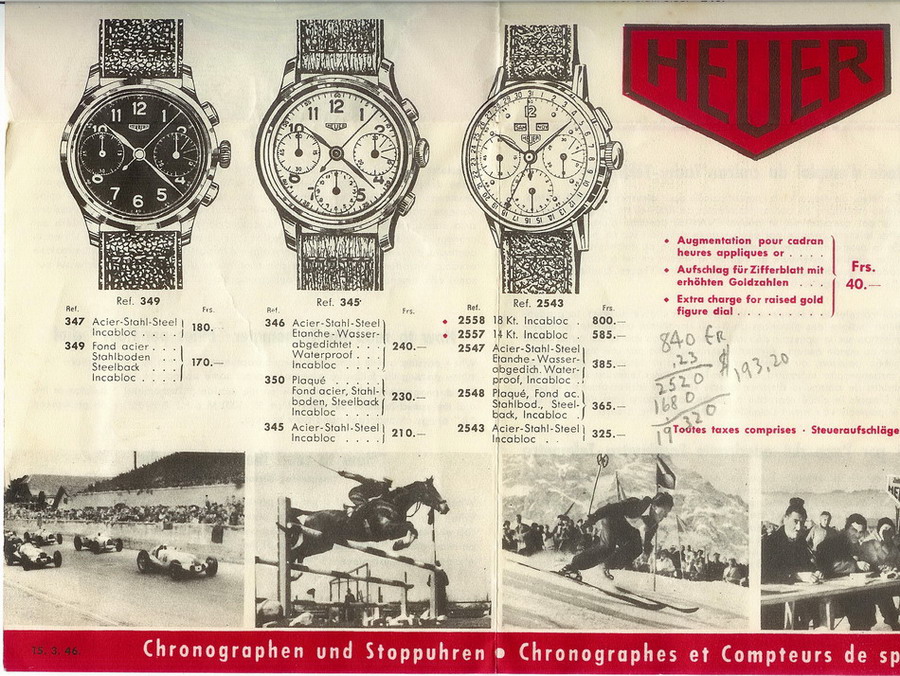|
|
A
Watch with a Story --
Triple Calendar, Three Register Chronograph,
Reference 2558 -- 18 Kt (from 1946)
|
It's
always fun to have a watch that comes with
a story. Sometimes, the story derives from
our own experience -- we receive the watch
to mark a special occasion or we have a
"war story" from our purchasing or
acquiring the watch. Other times, we have
a watch that tells someone else's story,
as we see the name of a stranger engraved
on the back of an old watch. Sometimes
these strangers can be mysterious -- as we
read the inscription we might visualize a
couple on their wedding day or proud
parents presenting their son with a watch,
as he graduated from medical school.
The
triple calendar, three register
chronograph shown below presents a
different kind of story. It is a beautiful
chronograph, in 18 karat gold, with raised
gold figures on the dial -- the single
most expensive model shown in Heuer's 1946
catalog. What makes this one interesting,
however, are the inscription on the
case-back and the papers that remain with
the watch, 60 years later. We are left to
wonder about the person who purchased this
watch, in Basel in the Spring of
1946.
|
|

|
The
Reference 2558 chronograph is a triple calendar
(day-date-month), three register chronograph, in 18
karat gold. This sample is the "top of the
line" model, with raised gold figures on the
dial. The dial is not white or silver, but more of
a cream color; the gold dauphine hands show that
nothing has been spared in the execution of this
model.
|


|
The
engraving on the case-back shows us that this watch
was purchased by a Mike Levin, in Basel in 1946.
This is an elaborate style of engraving, fitting
for a watch of this quality.
|

|
Shown
below is the original guarantee that was issued
with this watch and which remains with the watch
today. E. Linn was the jeweler who sold the watch
to Mr. Levin, and issued the guarantee. The serial
number for the watch (62823) watches the
number inside the case-back. The number for the
guarantee was likely the jeweler's own reference
number. We see that Mr. Levin was a soldier,
showing his address simply as "U. S.
Army".
|

|
The last
item with the watch is a copy of Heuer's 1946
brochure. Notice the handwritten notes -- likely
Mr. Levin's computation showing the purchase price
of the watch (840 French Francs) converted into
U.S. Dollars ($193.20). This catalog was printed
March 15, 1946.
|

|
And so
we are left with our watch, with the "Basel
1946" engraving, and questions about the
circumstances of the original owner and his
purchase.
- Was
"Mike" a nickname for "Meyer", or were Mike and
Meyer two different people?
- Was
the soldier (Meyer) purchasing for his son
(Mike) or another relative?
- How
was a soldier purchasing Heuer's most expensive
chronograph, for 840 Francs, the year after the
end of WWII?
- Was
he celebrating a promotion or decoration for
service during the War?
These
are just a few of the questions as we see this
beautiful watch and wonder about it's
"story".
|

|

